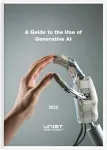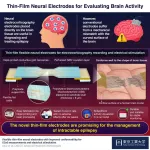(Press-News.org) The rate at which the universe is expanding, known as the Hubble constant, is one of the fundamental parameters for understanding the evolution and ultimate fate of the cosmos. However, a persistent difference called the “Hubble Tension” is seen between the value of the constant measured with a wide range of independent distance indicators and its value predicted from the big bang afterglow.
NASA’s James Webb Space Telescope provides new capabilities to scrutinize and refine some of the strongest observational evidence for this tension. Nobel Laureate Adam Riess from the Johns Hopkins University and the Space Telescope Science Institute presents his and his colleagues’ recent work using Webb observations to improve the precision of local measurements of the Hubble constant.
“Did you ever struggle to see a sign that was at the edge of your vision? What does it say? What does it mean? Even with the most powerful telescopes, the ‘signs’ astronomers want to read appear so small that we struggle too.
“The sign cosmologists want to read is a cosmic speed limit sign that tells us how fast the universe is expanding — a number called the Hubble constant. Our sign is written into the stars in distant galaxies. The brightnesses of certain stars in those galaxies tell us how far away they are and thus for how much time this light has been traveling to reach us, and the redshifts of the galaxies tell us how much the universe expanded over that time, hence telling us the expansion rate.
“A particular class of stars, Cepheid variables, has given us the most precise measurements of distance for over a century because these stars are extraordinarily bright: They are supergiant stars, a hundred thousand times the luminosity of the Sun. What’s more, they pulsate (that is, expand and contract in size) over a period of weeks that indicates their relative luminosity. The longer the period, the intrinsically brighter they are. They are the gold standard tool for the purpose of measuring the distances of galaxies a hundred million or more light years away, a crucial step to determine the Hubble constant. Unfortunately, stars in galaxies are crowded together in a small space from our distant vantage point and so we often lack the resolution to separate them from their line-of-sight neighbors.
“A major justification for building the Hubble Space Telescope was to solve this problem. Prior to Hubble’s 1990 launch and its subsequent Cepheid measurements, the expansion rate of the universe was so uncertain astronomers weren’t sure if the universe has been expanding for 10 billion or 20 billion years. That’s because a faster expansion rate will lead to a younger age for the universe, and a slower expansion rate will lead to an older age of the universe. Hubble has better visible-wavelength resolution than any ground-based telescope because it sits above the blurring effects of Earth’s atmosphere. As a result, it can identify individual Cepheid variables in galaxies that are more than a hundred million light-years away and measure the time interval over which they change their brightness.
“However, we also must observe the Cepheids at the near-infrared part of the spectrum to see the light which passes unscathed through intervening dust. (Dust absorbs and scatters blue optical light, making distant objects look faint and fooling us into believing they are farther away than they are). Unfortunately, Hubble’s red-light vision is not as sharp as its blue, so the Cepheid starlight we see there is blended with other stars in its field of view. We can account for the average amount of blending, statistically, the same way a doctor figures out your weight by subtracting the average weight of clothes from the scale reading, but doing so adds noise to the measurements. Some people’s clothes are heavier than others.
“However, sharp infrared vision is one of the James Webb Space Telescope’s superpowers. With its large mirror and sensitive optics, it can readily separate the Cepheid light from neighboring stars with little blending. In the first year of Webb operations with our General Observers program 1685, we collected observations of Cepheids found by Hubble at two steps along what’s known as the cosmic distance ladder. The first step involves observing Cepheids in a galaxy with a known, geometric distance that allows us to calibrate the true luminosity of Cepheids. For our program that galaxy is NGC 4258. The second step is to observe Cepheids in the host galaxies of recent Type Ia supernovae. The combination of the first two steps transfers knowledge of the distance to the supernovae to calibrate their true luminosities. Step three is to observe those supernovae far away where the expansion of the universe is apparent and can be measured by comparing the distances inferred from their brightness and the redshifts of the supernova host galaxies. This sequence of steps is known as the distance ladder.
“We recently got our first Webb measurements from steps one and two which allows us to complete the distance ladder and compare to the previous measurements with Hubble (see figure) Webb’s measurements have dramatically cut the noise in the Cepheid measurements due to the observatory’s resolution at near-infrared wavelengths. This kind of improvement is the stuff astronomers dream of! We observed more than 320 Cepheids across the first two steps. We confirmed that the earlier Hubble Space Telescope measurements were accurate, albeit noisier. We have also observed four more supernova hosts with Webb and we see a similar result for the whole sample.
“What the results still do not explain is why the universe appears to be expanding so fast! We can predict the expansion rate of the universe by observing its baby picture, the cosmic microwave background, and then employing our best model of how it grows up over time to tell us how fast the universe should be expanding today. The fact that the present measure of the expansion rate significantly exceeds the prediction is a now decade-long problem called “The Hubble Tension.” The most exciting possibility is that the Tension is a clue about something we are missing in our understanding of the cosmos.
“It may indicate the presence of exotic dark energy, exotic dark matter, a revision to our understanding of gravity, or the presence of a unique particle or field. The more mundane explanation would be multiple measurement errors conspiring in the same direction (astronomers have ruled out a single error by using independent steps), so that is why it is so important to redo the measurements with greater fidelity. With Webb confirming the measurements from Hubble, the Webb measurements provide the strongest evidence yet that systematic errors in Hubble’s Cepheid photometry do not play a significant role in the present Hubble Tension. As a result, the more interesting possibilities remain on the table and the mystery of the Tension deepens.”
The James Webb Space Telescope is the world’s largest, most powerful, and most complex space science telescope ever built. Webb will solve mysteries in our solar system, look beyond to distant worlds around other stars, and probe the mysterious structures and origins of our universe and our place in it. Webb is an international program led by NASA with its partners, ESA (European Space Agency) and the Canadian Space Agency.
END
Webb Confirms accuracy of universe’s expansion rate measured by Hubble, deepens mystery of Hubble constant tension
2023-09-14
ELSE PRESS RELEASES FROM THIS DATE:
Penn Medicine’s Carl June, MD, to receive 2024 Breakthrough Prize in Life Sciences
2023-09-14
PHILADELPHIA – CAR T cell therapy pioneer Carl June, MD, the Richard W. Vague Professor in Immunotherapy in the Perelman School of Medicine at the University of Pennsylvania and director of the Center for Cellular Immunotherapies (CCI) at Penn Medicine’s Abramson Cancer Center, has been named a winner of the 2024 Breakthrough Prize in Life Sciences for the development of chimeric antigen receptor (CAR) T cell immunotherapy, a revolutionary cancer treatment approach in which each patient’s T cells are modified to target and kill their cancer cells. The invention sparked a new path in cancer care, harnessing the power of patients’ own immune systems, a once-elusive ...
New research published by Nature Food reveals food is primary driver of the EU-27’s outsized Ecological Footprint
2023-09-14
One quarter of food consumed in the EU-27 originates from outside the region, highlighting the vulnerability of the EU’s food system.
New research coordinated by Global Footprint Network’s sustainability scientists in collaboration with food system experts published the article “EU-27 Ecological Footprint was primarily driven by food consumption and exceeded regional biocapacity from 2004 to 2014” today in Nature Food. The way food is provided to and consumed by Europeans represents ...
Rivers are rapidly warming, losing oxygen; aquatic life at risk, study finds
2023-09-14
UNIVERSITY PARK, Pa. — Rivers are warming and losing oxygen faster than oceans, according to a Penn State-led study published today (Sept. 14) in the journal Nature Climate Change. The study shows that of nearly 800 rivers, warming occurred in 87% and oxygen loss occurred in 70%.
The study also projects that within the next 70 years, river systems, especially in the American South, are likely to experience periods with such low levels of oxygen that the rivers could “induce acute death” for certain species of fish and threaten aquatic diversity at large.
“This is a wake-up call,” ...
London has the fastest increase in cooling demand in the world, shows new model
2023-09-14
A model to map energy demand down to street level shows cooling demand in the capital grew by 5% per year between 1980 and 2022 as summers heat up.
The Demand.ninja model, created by researchers at Imperial College London and TU Delft, was designed to show how the weather influences hourly energy consumption in buildings. It can also account for changes in demand as the climate changes, including the increase in cooling demand in the summer as heatwaves become more common and more intense.
Countries ...
New research signals a quantum leap for brain tumour treatment
2023-09-14
Researchers have discovered a new way to target and kill cancer cells in hard-to-treat brain tumours using electrically charged molecules to trigger self-destruction, that could be developed into a spray treatment used during surgery.
A multidisciplinary team of researchers from the University of Nottingham, led by the School of Pharmacy found a new way to harness the extraordinary capabilities of bio-nanoantennae—gold nanoparticles intricately coated with specialised redox active molecules to induce programmed cell death, or apoptosis, in cancer cells on electrical stimulation. The research ...
Use of physical therapy and subsequent falls among patients with dizziness
2023-09-14
About The Study: The findings of this study of 805,000 patients ages 18 or older suggest that receipt of physical therapy (PT) after presentation for dizziness was associated with a reduction in fall risk during the subsequent 12 months; thus, timely PT referral for dizziness may be beneficial for these patients. Future research, ideally with a clinical trial design, is needed to explore the independent impact of PT on subsequent falls for adults with dizziness.
Authors: Meredith E. Adams, M.D., M.S., of ...
Geographical variation in social determinants of female breast cancer mortality across US counties
2023-09-14
About The Study: The results of this study of 2,176 counties suggest that breast cancer mortality in the U.S. can be affected by where individuals live, and that more comprehensive and geographically targeted interventions may lead to healthier communities.
Authors: Taylor Anderson, Ph.D., of George Mason University in Fairfax, Virginia, is the corresponding author.
To access the embargoed study: Visit our For The Media website at this link https://media.jamanetwork.com/
(doi:10.1001/jamanetworkopen.2023.33618)
Editor’s Note: Please see the article for additional information, including other authors, author contributions ...
Combination immunotherapy treatment effective before lung cancer surgery
2023-09-14
Combination immunotherapy with the anti-PD-L1 monoclonal antibody durvalumab and other novel agents outperforms durvalumab alone in the neoadjuvant (pre-surgical) setting for early-stage non-small-cell lung cancer (NSCLC), according to researchers at The University of Texas MD Anderson Cancer Center.
The findings, published today in Cancer Discovery, were first presented at the American Association for Cancer Research (AACR) Annual Meeting 2022.
The multicenter, randomized Phase II NeoCOAST clinical trial evaluated neoadjuvant durvalumab alone ...
Verbal nonsense reveals limitations of AI chatbots
2023-09-14
NEW YORK – The era of artificial-intelligence chatbots that seem to understand and use language the way we humans do has begun. Under the hood, these chatbots use large language models, a particular kind of neural network. But a new study shows that large language models remain vulnerable to mistaking nonsense for natural language. To a team of researchers at Columbia University, it’s a flaw that might point toward ways to improve chatbot performance and help reveal how humans process language.
In a paper published online today in Nature Machine Intelligence, ...
Revolutionizing brain monitoring and stimulation with thin-film neural electrodes
2023-09-14
Flexible thin-film electrodes placed directly on brain tissue show promise for the diagnosis and treatment of epilepsy, as demonstrated recently by scientists at Tokyo Tech. Thanks to an innovative yet straightforward design, these durable electrodes accurately match the mechanical properties of brain tissue, leading to better performance during electrocorticography recordings and targeted neural stimulation.
Measuring brain activity is a useful technique for diagnosing epilepsy and other neuropsychiatric disorders. Among the several approaches adopted, electroencephalography (EEG) is the least invasive. During EEG recordings, electrodes ...





